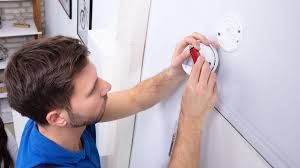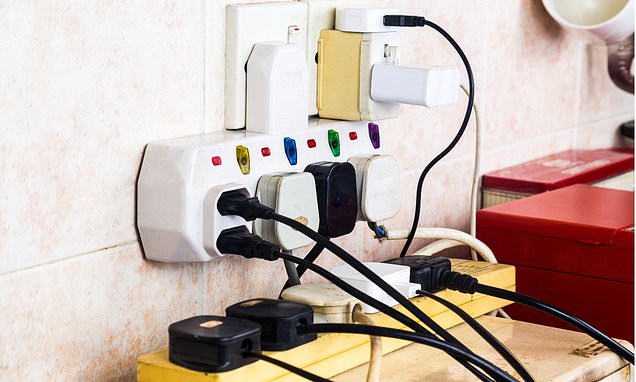As winter approaches, the likelihood of indoor fires surges within businesses. This heightened risk stems from various factors, including the increase in the use of central heating systems, the installation of festive decorations in workplaces and end-of-year fatigue. The Detailed Analysis of Fires Attended by Fire and Rescue Services Report published by the government in September has revealed that between 2022-23:
- A staggering 29% of fires stem from mishandled equipment or appliances
- Misuse of appliances caused 13% of fires in 2023
- Flames sparked by flammable items and coming into contact with heat accounted for more than 15% of last year’s blazes
- Worryingly, 43% of fires go unnoticed by smoke detectors across the UK
To protect your employees, customers, and assets, it’s crucial to take measures to mitigate this risk. In response, Simon Walter, Director at health and safety consultancy firm Rhino Safety, has compiled a set of invaluable tips to help you maintain a secure business environment throughout winter.
Conduct a Risk Assessment
Conducting a thorough fire risk assessment involves several key steps. Initially, identify fire hazards and at-risk  individuals. Then, evaluate and mitigate these risks, record findings, and provide training as well as develop an emergency plan. Regularly review and update the assessment. Consider the specific needs of vulnerable individuals. If conducting the assessment yourself, use standard guides. If not, appoint a professional risk assessor. Seek advice from your local fire and rescue authority, but remember, they won’t conduct assessments for you.
individuals. Then, evaluate and mitigate these risks, record findings, and provide training as well as develop an emergency plan. Regularly review and update the assessment. Consider the specific needs of vulnerable individuals. If conducting the assessment yourself, use standard guides. If not, appoint a professional risk assessor. Seek advice from your local fire and rescue authority, but remember, they won’t conduct assessments for you.
Install smoke alarms
Installing smoke alarms on every level of your workplace is an important step in keeping employees safe. Installing them is just the first step, you must test your smoke alarms regularly to ensure that they are working  properly. Most experts recommend testing your smoke alarms once a month. You should ensure that the batteries are changed at least once a year. Put a date in your calendar and stick to it.
properly. Most experts recommend testing your smoke alarms once a month. You should ensure that the batteries are changed at least once a year. Put a date in your calendar and stick to it.
Whilst ensuring your smoke alarms are always working, if they aren’t in the right place, then the smoke won’t reach them. According to research, 43% of fires where the smoke alarm didn’t go off, it was because the fire products did not reach the detector.
Have a fire escape plan
Creating and practising a fire escape plan regularly is an important step in keeping everyone safe in the event of a fire. This plan should outline the steps that all employees should take to evacuate if a fire occurs.
To create a plan, start by drawing a floor plan of your workplace. Be sure to include all doors, windows, and stairways, as well as any other potential exits. Next, identify two ways out of each room, in case one of the exits is blocked by fire or smoke.
Once that’s done, run through the plan with everyone in the company. You can even practice it so that they become familiar with what to do in the event of a fire. Everything from how to leave safely, to where the designated meeting place is. This may seem extreme, but having a plan ensures that nobody panics in the event of a fire.
Don’t overload electrical outlets or extension cords
Overloading electrical outlets and using frayed or damaged electrical cords are common causes of indoor fires. To prevent these types of fires, don’t overload electrical outlets or use damaged chords. Last year, 29% of all accidental fires were caused by the misuse of equipment or appliances
When using electrical outlets, be sure to avoid plugging in too many devices at once. Each outlet is designed to  handle a certain amount of electrical current, and using too many devices at once can cause the outlet to overload and potentially start a fire. To avoid overloading an outlet, use a power strip or surge protector to distribute the electrical load among multiple outlets.
handle a certain amount of electrical current, and using too many devices at once can cause the outlet to overload and potentially start a fire. To avoid overloading an outlet, use a power strip or surge protector to distribute the electrical load among multiple outlets.
In addition to avoiding overloading outlets, it is also important to never use frayed or damaged electrical cords. Frayed or damaged cords can easily become a fire hazard, as the exposed wires can short-circuit and cause a fire. If you notice that an electrical cord is frayed or damaged, stop using it immediately and replace it with a new one.
Stay informed
Staying informed about fire safety and being prepared to take action in the event of a fire is an important part of keeping employees safe. To stay informed, it is helpful to read up on fire safety guidelines and tips and to attend any fire safety presentations or classes that may be offered in your area.
Educate yourself about common causes of fires and how to prevent them. This includes learning about the proper use and maintenance of appliances and electrical devices, the dangers of smoking indoors, and the importance of having working smoke detectors and fire extinguishers in your office.
Stay up to date with local news and emergency alerts and consider signing up for a fire safety class or training. Many fire departments offer classes and workshops on fire prevention and response, which can provide valuable knowledge and skills for staying safe in the event of a fire.

1 Comment
Pingback: Common Security Issues In Calgary And How To Fix Them - Its Rider